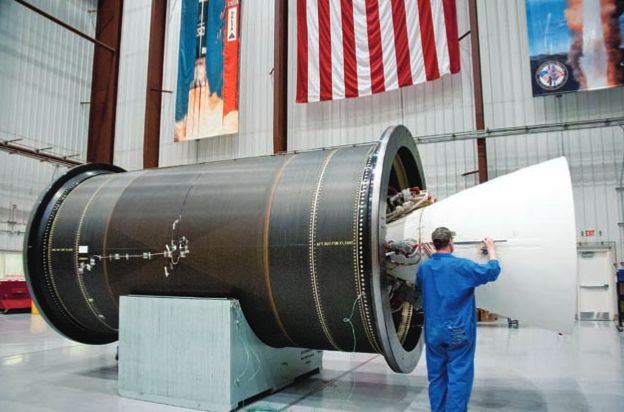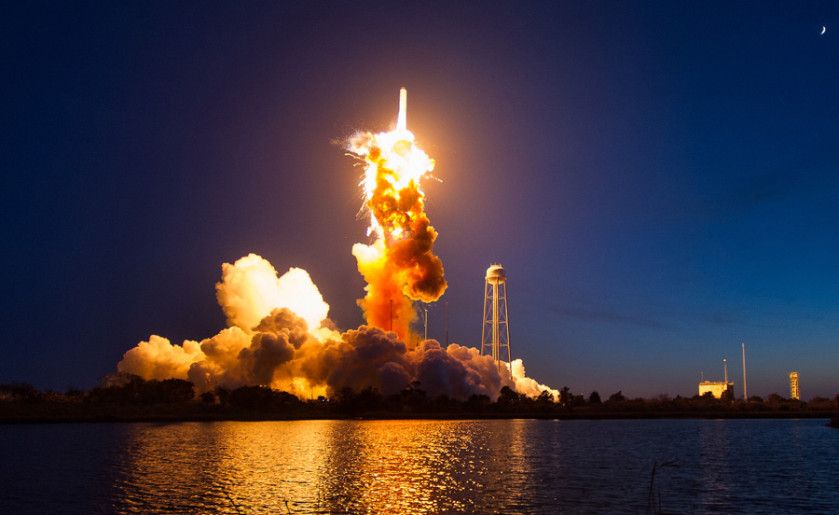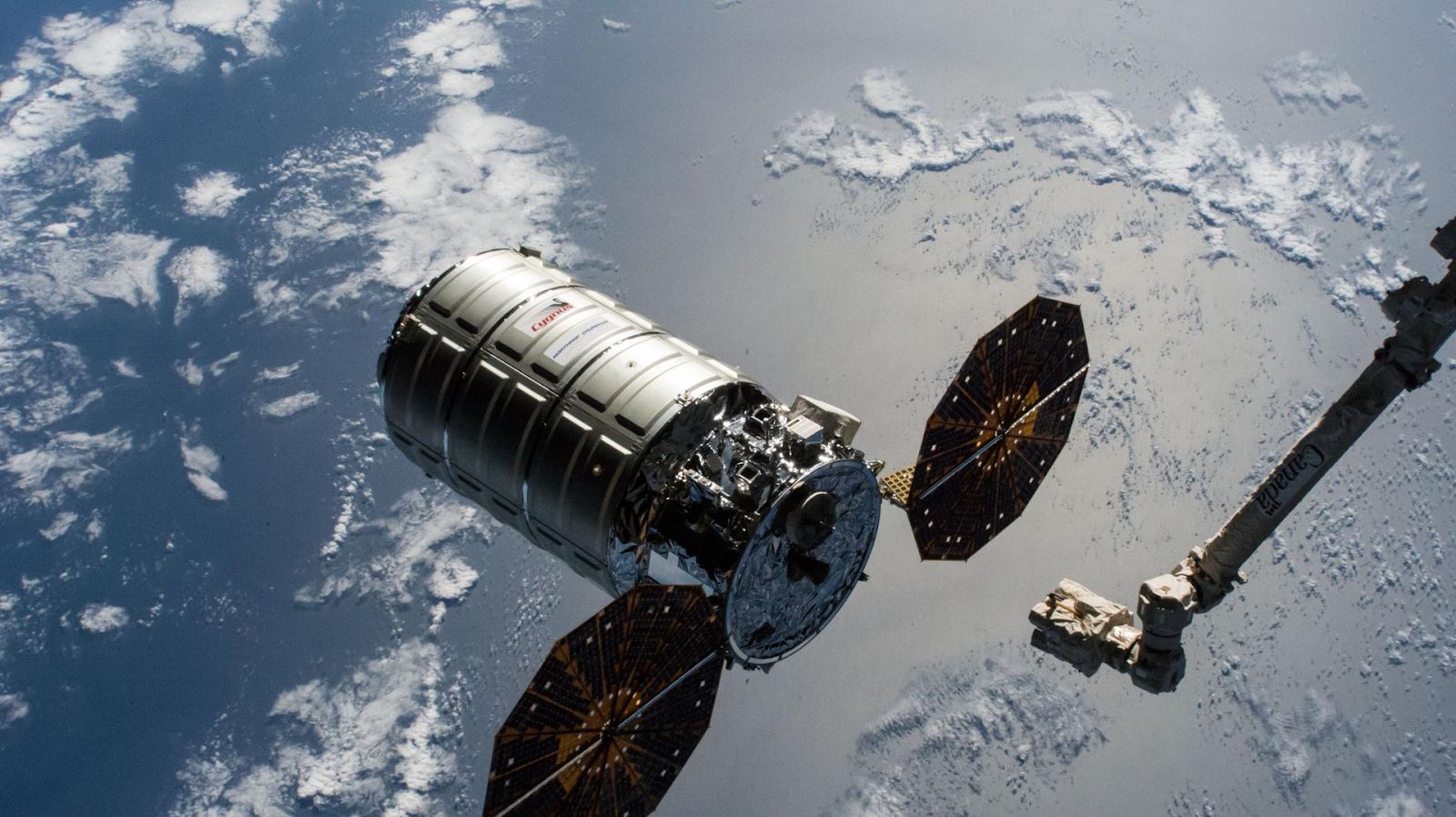Antares and Cygnus
by Hugo Filmer, Form V
5 min. read — April 16, 2021

Many of you may be aware of flashy commercial space companies like SpaceX or Rocket Lab, but they aren’t the only ones around. SpaceX got its first big break during NASA’s Commercial Resupply Services program; NASA selected two companies from a list of competitors to deliver cargo to the International Space Station with unmanned spacecraft. The funding from this contract enabled SpaceX to develop the large Falcon 9 rockets and Dragon spacecraft it’s known for these days. However, there was a second, lesser-known company also chosen to launch cargo to the ISS.
On February 20th, 2021, I went down to the Wallops Flight Facility in Virginia to watch an Antares rocket, carrying the Cygnus spacecraft Katherine Johnson towards the ISS, launch. The morning was cold, but it was easy to ignore that as we watched the launch preparations from the safety of the old Wallops dock 2.2 miles away. At 12:36 pm, a brilliant light shone from the pad as Antares lifted off. Due to the difference between the speed of sound and light, it was a few seconds before we could hear the noise of the engines, but what a noise it was! The entire sky seemed to shake. If you’ve ever heard thunder near you, the noise was something like that but sustained for over a minute. It was an inspiring experience.
The Orbital Sciences Corporation began developing Antares (originally named Taurus II) after Rocketplane Kistler dropped out of the competition in 2006 due to funding difficulties. NASA, having lost one of their two contractors, signed Orbital Sciences on to develop a vehicle to bring cargo to the ISS, as well as a rocket to launch it. In sharp contrast to SpaceX’s build-it-yourself approach, Orbital Sciences used existing hardware and international partnerships heavily. The primary international contractor was KB Yuzhnoe, based in Dnepropetrovsk, Ukraine. Following the end of the Cold War and the split between Russia and Ukraine, the country found itself in possession of some advanced space technology know-how, including the design bureaus which built the first stage of the Zenit rocket, and Yuzhnoe used this knowledge in constructing the first stage of Antares. The large kerosene-oxygen engines of the first stage would be two AJ-26s, supplied by Aerojet Rocketdyne. However, the AJ-26 was actually a Russian rocket engine known as the NK-33, designed and built for the failed Soviet N1-L3 moon rocket. Following the end of the space race and the cancellation of the N1-L3, many of these engines were simply kept in storage. After Russia opened up to foreign business in the ‘90s, American businessmen were shocked to see such advanced engines collecting dust, and Aerojet bought up the engines, renaming them in the process.
The upper stage of the rocket, unlike the liquid first stage, uses solid propellant and was developed by Thiokol, which later merged with Orbital Sciences to form Orbital ATK. The design was based on the earlier Castor 120 motor, which itself was based on the SR-118, the first-stage motor of the Peacekeeper intercontinental ballistic missile. Because this new motor, optimized for upper-stage use, was originally designed with a weight of about 30,000 pounds, it was named “Castor 30.” This motor would insert the Cygnus spacecraft into its final orbit.

Following five years of development, the first Antares rocket, A-ONE, was launched in 2013 from the mid-Atlantic regional spaceport (MARS) at the Wallops flight facility in Virginia. Compared to other US launch sites like Cape Canaveral, Kennedy, and Vandenberg AFB, Wallops is fairly underused. However, the site was chosen because of its convenient location near Dulles, Orbital Sciences’ headquarters, and also because of this lack of traffic. In addition, Wallops is at a latitude well-suited to launch to the ISS. This first flight was merely a demonstration, and as such did not carry an ISS-bound Cygnus. Following A-ONE’s success, the Antares 100-series began launching in earnest.
On October 28, 2014, the fifth Antares blasted off from Wallops. This Antares carried a new upper stage, the Castor 30XL. This motor had been stretched to nearly double the original length, and the nozzle had been improved to increase efficiency. Unfortunately, the improved motor would never get the chance to fire. About six seconds after liftoff, one of the two AJ-26s began to flicker, and then dramatically exploded. The rocket, with nearly full fuel load, lost thrust, hung still in the sky for a moment, and then slowly fell back to the pad, where it too exploded. The disastrous mission prompted a serious investigation into the reliability of the nearly-50-year-old Soviet engines. It was later determined that an oxygen turbopump had failed. Ultimately, it was decided that the Antares 100-series would be replaced by the 200-series, which would feature newer engines, also from Russia. The RD-181, using the same propellants and with a thrust and efficiency similar to the AJ-26, was chosen. However, the rocket’s performance was improved enough to upgrade the Cygnus spacecraft to an enhanced variant, which featured a stretched cargo compartment.

Antares has flown 9 missions since the 2014 failure, all of which have been on the upgraded 200-series and all of which have been successful. In addition, to fulfill the cargo requirements for NASA, Orbital Sciences also had to launch several Cygnus spacecraft on Atlas V rockets, provided by United Launch Alliance, which made up for the missed launches caused by the failure and subsequent upgrade campaign. Antares has several future missions planned for resupplying the astronauts on the ISS, and the future looks bright for this government-contracted, commercially-built rocket!
